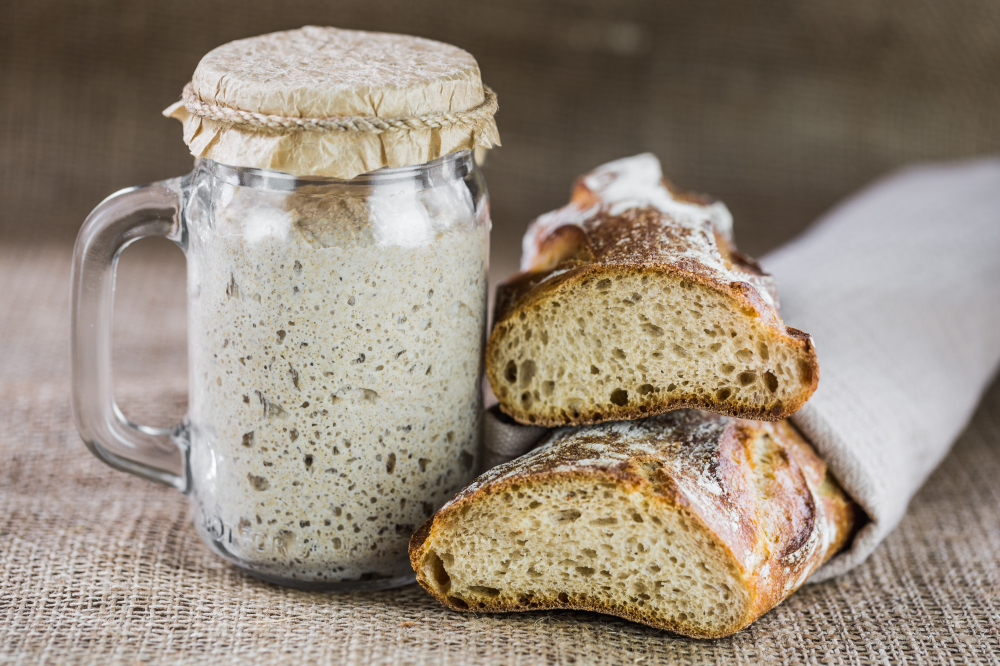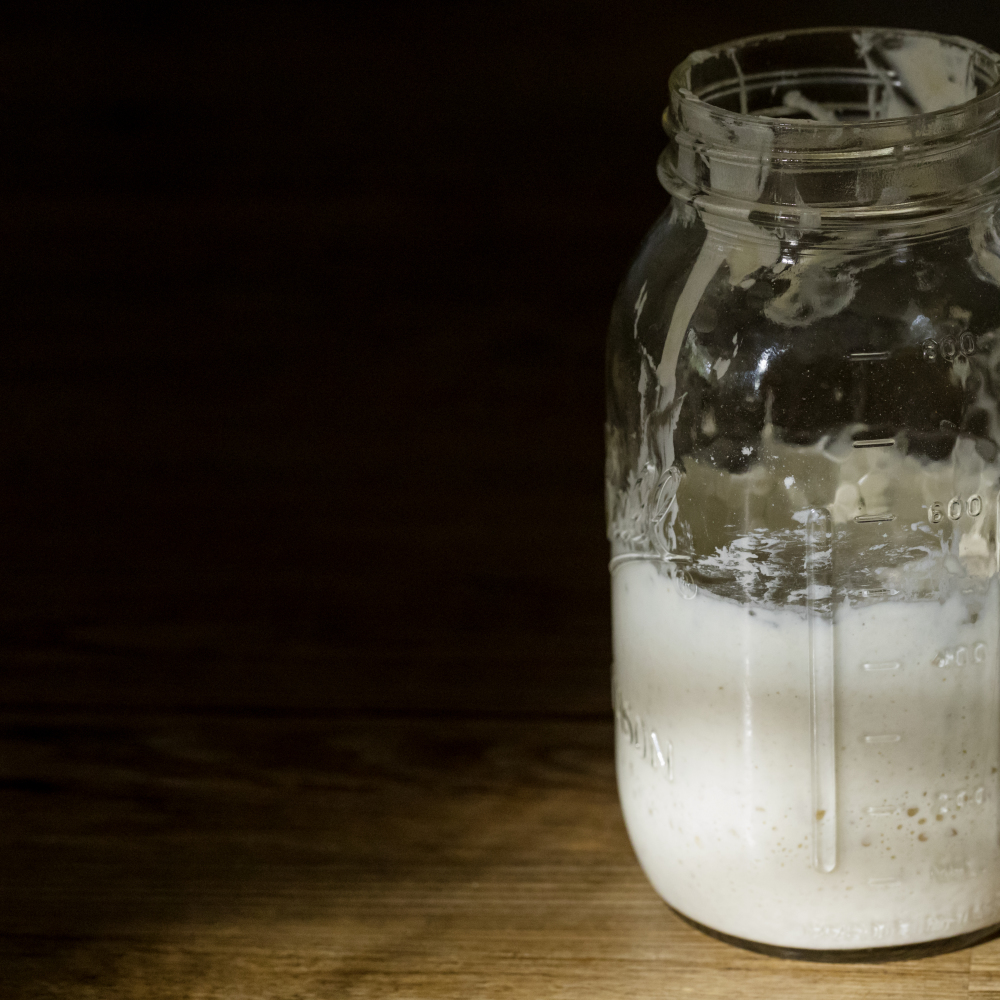Bread is good. Bread with butter is even better. Bread you handmade yourself, slathered with salty, yellow butter, sliced as thick as cheese? Unbeatable. It's the perfect equation, and one many of us have become increasingly obsessed with in recent weeks.

The 8 emotional stages of raising your own sourdough starter
Stuck at home and in need of activities that distract from the pandemic, more and more of us have embraced the doughy world of baking, especially the tricksy art of making sourdough.
But if you're a newly drafted sourdough apprentice, you'll know crisp golden loafs with sour, bouncy aerated middles, aren't guaranteed. In fact, there's a whole lot of sourdough starter turmoil to go through before you even think about kneading, shaping and baking. We feel your pain.
1. Optimism
You're pretty happy with sliced white, but you do quite miss that avocado topped slice of sourdough you'd order occasionally from your local fancy bakery. Plus, everyone on social media is churning out perfectly scored sourdough loaves – it can't be that hard, can it? You Google it, realise you need a starter – a fermented dough that kickstarts the loaf – and think, 'Great, I needed a new hobby anyway.'
2. Enthusiasm
You're buoyant – you love bread! You're already cooking so much more at the moment, adding sourdough to your repertoire would be such an achievement! You cobble together a load of equipment: kilner jars and muslin cloths for your starter, proving baskets and loaf tins, a cast iron pan from the back of the oven, and somehow, a whole stash of flour. This is going to go so well.

3. Confusion
And then you start poring over sourdough recipes and lose your mind entirely. The methods are pages long, people are talking about rye and buckwheat, crumb and fermentation, high-hydration doughs (what?!), gluten stretchiness and 'ears' (again, what?!). You're drowning in advice, and your internet research is making sourdough seem like some kind of edible holy grail that only decades of study and respect will earn you. This was meant to be a bit of fun.
4. Confidence
You shrug off the literature and just get started. Apparently all you need is a little flour and water mixed together and left out to catch 'natural yeasts'. Or a friend (or online shop) that will donate you a little of their starter. This is totally do-able.
5. Tentative
A couple of days in and your starter is starting to bubble. You have become obsessed with its progress, constantly checking how bubbly and burpy it is, its colour and activity. You are fastidious in feeding it more flour, and spend hours chatting to fellow sourdough devotees online. But you know now, sourdough starters can be fickle. You must remain vigilant.
6. Utterly demoralised
You didn't change a thing – your routine has been scrupulous! And yet, where have the bubbles gone? Why does your starter look so sad and flat?!!
7. Hopeful
OK, it's looking a little bit more alive, the bubbles are bubbling, and you've given it so much love and attention over the last few days, surely it wants to make good bread for you? You brace yourself for actual breadmaking. This is it, starter, time to do your job.
8. So, so proud
Success! Kind of! Well, it's a loaf, and it's crunchy and golden on the outside, and springy in the middle, it tastes pretty sour and you actually got an 'ear' on it (a ridge in the crust from scoring the dough). You reach for the butter, and think that maybe you will start experimenting with rye and buckwheat flours. You and your starter are clearly meant to be.

